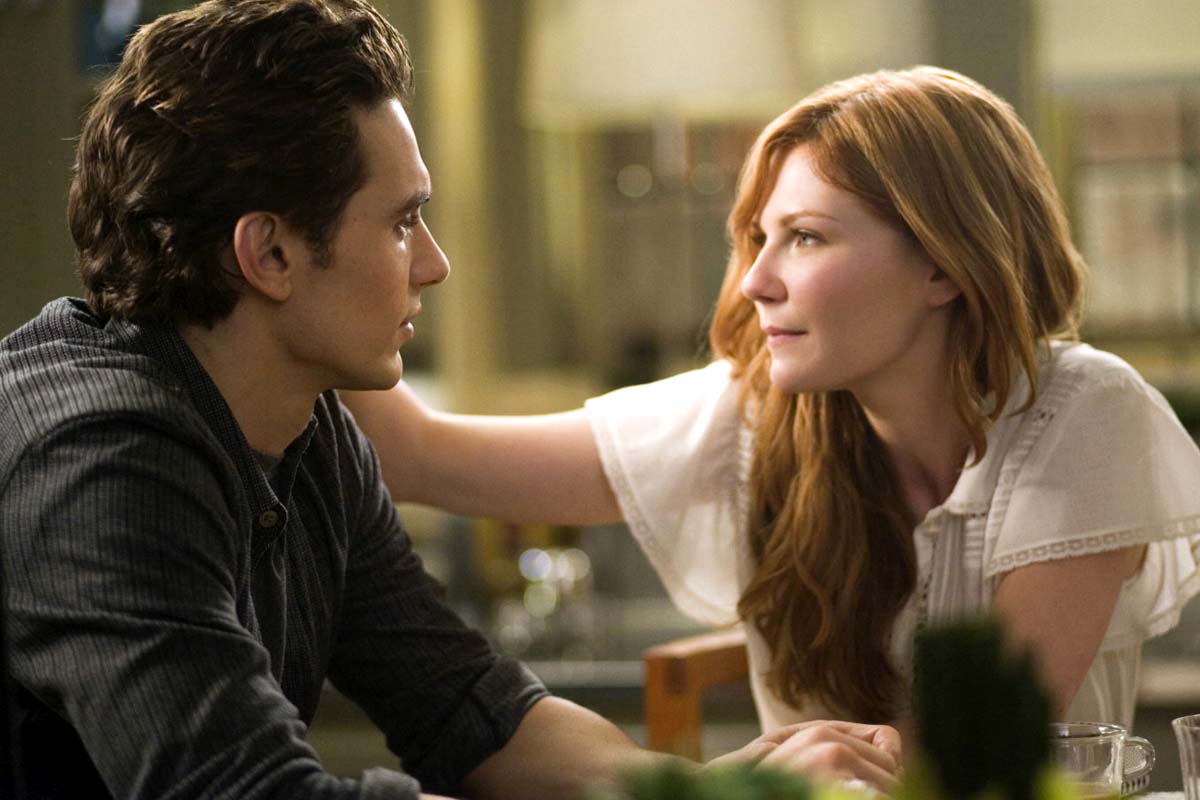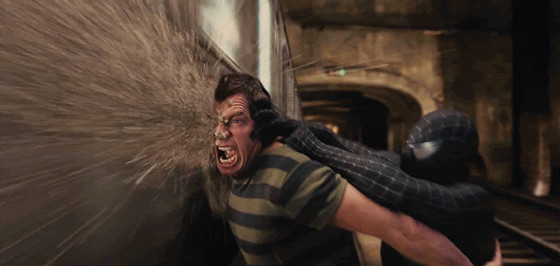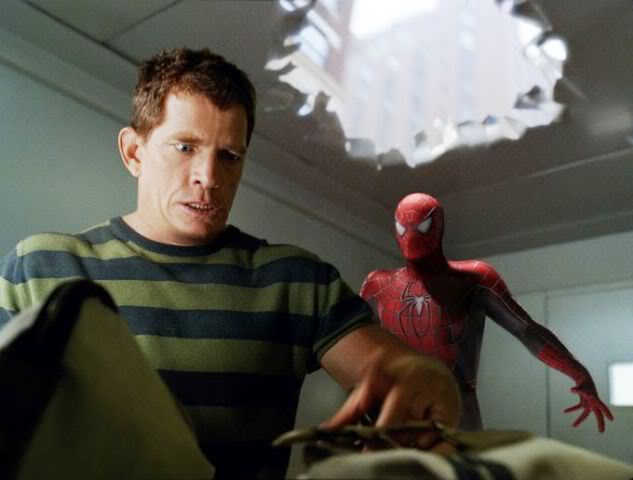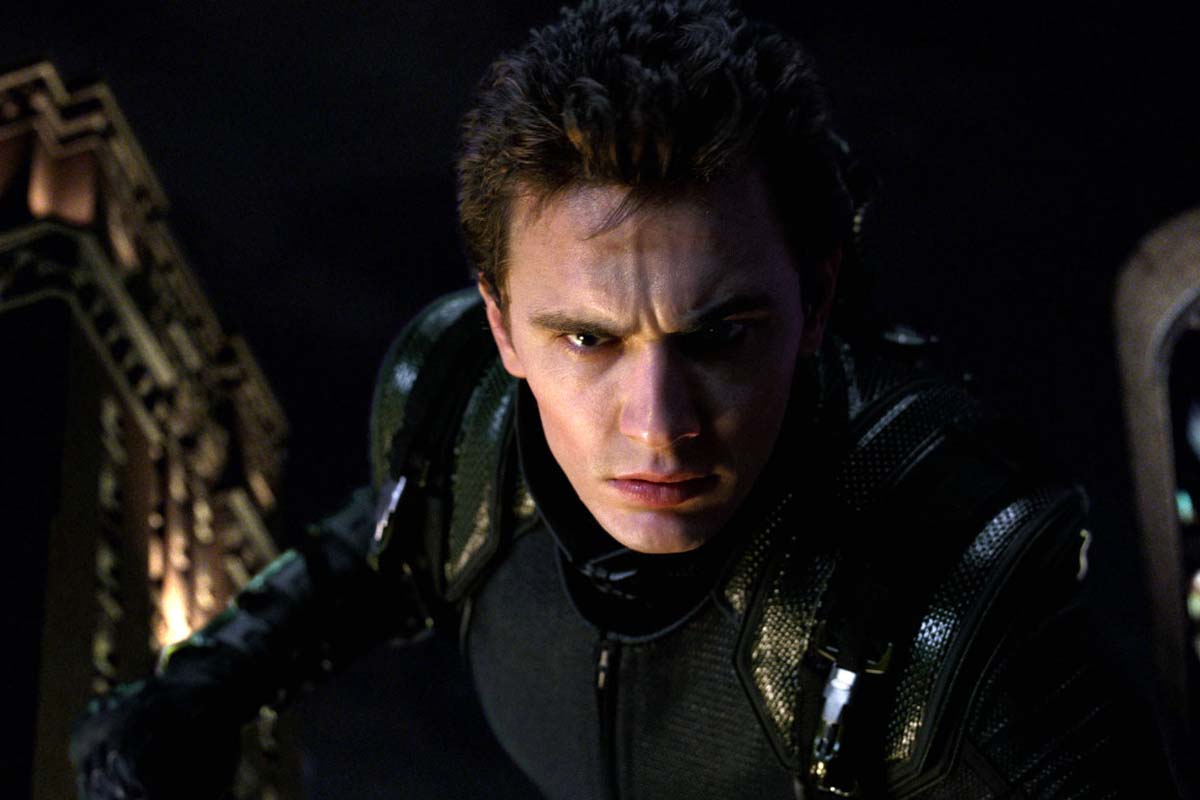4. It isn’t afraid of intense emotions

Many recent comic-book movies seem petrified at the prospect of their characters experiencing anything resembling a human emotion. Yes, Christian Bale wept movingly for Gotham in “The Dark Knight Rises” and Bryan Singer managed to slip in some tender moments between the mutants of “X-Men: Days of Future Past.” But the other superheroes of the moment (here’s looking at you, Iron Man, Thor, Guardians of the Galaxy, and Deadpool) are all safely shrouded in self-satisfied snark.
“Spider-Man 3” is exactly the opposite: It brims with feeling. Lovers profess the passion for one another; villains rage against the injustice the roles that life (and Raimi) cast them in; and mentors dispense the kind of weighty wisdom that can only be accrued from a lifetime of painful experiences. In short, the movie exemplifies what A.O. Scott observed when he reviewed the first “Spider-Man” film in The New York Times: that Raimi isn’t afraid of “corny sentiment.”
To Scott, “corny” wasn’t a pejorative, and it shouldn’t be. A great film may require disciplined storytelling, but it also demands deeply felt bursts of emotion that bubble to the surface of scenes like the ones that feature Peter’s tender reconciliations with Harry and Marko. And while those moments may make Raimi look like a sap, they also sweep you away with momentum and an honesty that reminds you that often, it’s the saps who write history—both in life and on film.
5. The film’s fight scenes are exhilarating and inventive

Want to see modern action filmmaking at a zenith? Then watch the scene in “Spider-Man 3” where Peter is hurled through a window far above a city street. It’s a moment of hushed, ecstatic terror: In slow motion, we see Peter fall, while the engagement ring he plans to give to MJ plummets through the air—it fell out of his pocket while he was fighting the newly villainous Harry (more on that later).
Then, thanks to the stunningly precise work of sound mixers Kevin O’Connell (whose lengthy Oscar losing streak recently ended with his win for “Hacksaw Ridge”) and Greg P. Russell, we hear the “whoosh!” of Peter’s hand swiping through the air as he tries to seize the ring while tumbling toward the pavement below.
Everything about that shiveringly cool moment—the clarity, the poetry, the attention to detail—encapsulates what makes “Spider-Man 3” a colossus of gobsmacking cinematic violence. Raimi may emphasize the ordinariness of his protagonist’s life throughout the trilogy (spoiler alert: Peter still doesn’t pay his rent on time), but he’s also a brilliant choreographer of mayhem whose knack for funneling wild stunts through cohesive shots and edits makes Paul Greengrass look like Zack Snyder.
Thankfully, Raimi is also a rare innovator in a Hollywood where we’ve seen so many bullets fired and punches thrown that almost nothing feels fresh anymore. Against the odds, he made each “Spider-Man 3” battle reverberate with imaginative force, from a motorized-glider-riding Harry’s pursuit of Peter through a dizzingly narrow alleyway (with a cache of his charmingly named “pumpkin bombs”), to the chase where Peter rides a chunk of metal through traffic like a surfer, and to the impossibly long shot where Peter and Eddie Brock (a creep who inherits the symbiote after Peter discards it and is played with agitated relish by Topher Grace) plunge earthward from what must be hundreds of feet in the air.
So thrilling and well-executed are these showdowns that, like many of the greatest film fights, they feel a bit like dances—albeit dances where each partner isn’t afraid to sock someone in the face (or, in some cases, uncork a pumpkin bomb).
6. The connection between Flint Marko and Uncle Ben deepens the Spider-Man mythos

Nicholas Meyer, a director of two “Star Trek” films (and a writer on TV’s upcoming “Star Trek: Discovery”), once wrote that the characters of Gene Roddenberry’s progressive interstellar adventure are as sacrosanct as the traditions of the Catholic Mass. But what Meyer didn’t acknowledge is that the core elements of the Spider-Man saga are similarly legendary.
That’s particularly true of the still-wrenching fate of Uncle Ben and its awful circumstances: After Dennis Carradine kills Ben, Peter realizes that Carradine once robbed a man who ripped him off. In a fit of bitterness, Peter then allowed Carradine to escape and as a result, Carradine murdered Ben later that night, making Peter responsible for the death of the man who was—in practice, if not by blood—his father.
That tragedy is the reason that as Spider-Man, Peter sacrifices his time, strength, and sanity to protect innocent people. It’s both his way of honoring Ben and a form of self-flagellation (he’s also fighting for a better, safer New York, but Raimi is attuned to the role that personal and even selfish motivations play in obsessions).
Still, as iconic as that particular tenet of Spider-Man lore is, it was upended in “Spider-Man 3” by the revelation that it was Marko who shot Uncle Ben. Initially, this appears to exonerate Peter, though that thought never seems to occur to him. He just simmers and stews in his apartment, before setting out on a rampage that he hopes to end by murdering Marko (who goes on a crime spree aimed at securing the funds necessary to cure his ailing daughter).
There’s one more sticky twist to come, however: Marko’s confession that when he held Ben at gunpoint, Carradine distracted him, causing him to accidentally pull the trigger and kill Ben (so Peter is culpable after all). “I did a terrible thing to you,” Marko tells Peter. That’s true, but Peter still forgives him because post-symbiote, he’s able see himself in Marko (“I’ve done terrible things, too,” he admits).
That humble confession imbues an already complex story with yet another layer of ethical richness and exemplifies Raimi’s belief (recounted in producer Grant Curtis’ exhaustive and engrossing book “The Spider-Man Chronicles: The Art and Marking of ‘Spider-Man 3’”) that Peter needed “to learn that not all people deserve vengeance.
We had to teach him that some crimes are committed unknowingly, some are accidents, some people regret the crimes they have committed. And who is he to punish criminals? He’s a sinner himself.”
7. It offers a powerful conclusion to Harry Osborn’s story

It seems safe to say that if there’s a performance that will earn James Franco a place in future film history textbooks, it will be his gonzo portrayal of Alien, the cornrow-sporting and eerily childlike gangster from Harmony Korine’s “Spring Breakers.” Yet over a decade before that virtuoso tornado of a performance, Franco staked out a place in Spider-Man history with his powerfully vulnerable portrayal of Harry, which spotlighted his poignant sensitivity and his gift for humanizing difficult-to-like characters.
You see that right away during Harry’s first film appearance, when he enters the original “Spider-Man” in a Rolls-Royce. A teenage dropout of a private school preferred by his deep-pocketed father (Peter’s eventual nemesis, Norman Osborn/the Green Goblin, played by Willem Dafoe), Harry didn’t seem to fit in anywhere back then—which was why he fit in perfectly with Peter, an awkward outsider who was delighted to have a pal.
Yet over the years, their relationship grew warped, especially when Spider-Man appeared to have killed Harry’s father (he didn’t) and when Harry uncovered the truth about his best friend’s violent extracurricular activities.
That discovery leads to all-out war between the two men in “Spider-Man 3” (after Harry has juiced up with his dad’s old “performance enhancer” drug). That said, the movie is up front about the fact that Peter and Harry aren’t merely superhero and supervillain in this scenario—they’re also former classmates having a tiff based on a simple misunderstanding, as their hilariously childish battle cries reveal (“I protected you in high school…now I’m gonna kick your little ass!”).
Of course like all tiffs, this one has consequences. One brawl leaves Harry severely disfigured, with a face that’s gone from looking like a handsome waxwork to looking like a veined chunk of sandstone. “You don’t deserve my help,” he bitterly declares when a repentant Peter begs him to help him rescue MJ from Marko and Brock. So Peter leaves Harry in his cavernous penthouse, where he stares down at a high-tech sword he once wielded, wondering where it got him.
There’s another reason Harry refuses to help. Unlike Peter, he never had a father figure to offer him moral guidance, to tell him, “With great power comes great responsibility” (as Uncle Ben told Peter in an eternally resonant scene in the first film). So in “Spider-Man 3,” someone tries: Bernard, his butler (Bill Paxton’s father, the late John Paxton). Not only does he reveal to Harry that Norman accidentally killed himself, but he offers some much-needed wisdom and compassion. “I loved your father, as I have loved you,” he tells Harry. “As your friends love you.”
It’s because of those words that Harry arrives just in time to stand beside Peter—and to ultimately sacrifice himself to save his friend from Brock. And so, after the fight has waned, Harry lies on one of the open-air floors of that unfinished skyscraper, his head cradled in MJ’s arm as life fades from his battered body.
It’s awful to watch Harry—who we see grow from a boy to a man over the course of the three films—like this. But his journey is inspiring because it’s a reminder that human beings, at their best, can rise above their circumstances, can be better than they’re made to be. And just as importantly, it offers a sad yet beautiful conclusion to the trilogy’s greatest friendship.
“[I] should never have hurt you…said those things,” Peter says as he watches Harry die. But Harry, even though he’s in pain, finds the strength to wave that apology away. “None of that matters, Peter,” he says. “You’re my friend.” And Peter replies with the simple words that echo through this flawed but beautiful film:
“Best friend.”
Author bio: Bennett Campbell Ferguson is a freelance film critic and culture writer based in Portland, Oregon. In addition to reviewing films for Willamette Week, he founded the blog T.H.O. Movie Reviews, which he also edits.